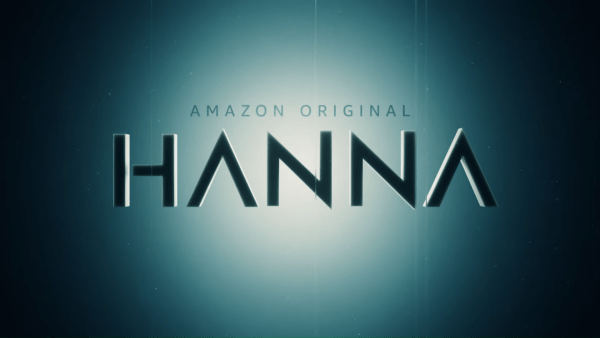With a career that has encompassed spates on The Crown, Top Boy, and collaborations on Nymphomaniac and Melancholia, Editor Morten Højbjerg could never be accused of creative stasis. He recently took time out to talk with Martin Carr about his long term involvement with Amazon’s Hanna.
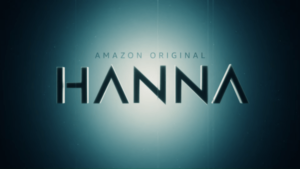
How collaborative was the editing process on Hanna?
In my opinion, collaboration is everything. Any good work is always built on trust and understanding of the sensibilities of the people you are collaborating with. And working on both seasons of Hanna has put me in a great position to be familiar with this unique universe and everyone involved in it — from David Farr, the creator of the show, to executive producer Tom Coan, which over time has allowed me to develop these important personal relationships. The language of film is so subjective. Beyond the fundamental dramatic rules, there isn’t a lot of things to stick to. It’s all relative to the unique experience that everyone goes through life with. For example, if I am talking about a particular sequence and feel it needs to be, let’s say, more intense and sinister, that might mean one thing to me but something entirely different to another person. So how do we make sure that we are on the same page? Another common example is music, which is extremely difficult to talk about on a theoretical level, before an actual piece of music exists. Purely because your interpretation of what pieces would work in a scene is down to personal taste and perception. What sounds overly dramatic to you, might not sound dramatic at all to other people.
In order to make a successful show or film, you need to build on this collaboration between people, so that you are all talking about the same thing. You need to pull together in the same direction, and you need to hopefully inspire each other along the way. In a way, every new project is a new beginning in that sense. You develop a common language over time. The editing room is such a peculiar and vulnerable place because in order for it to function properly, it must be truthful. We are creating something people have been preparing for, in most cases for years, and where large sums of money and energy have been invested. In the editing room, we encounter the moment of truth where it suddenly becomes clear what it is we have been working towards. For that reason, I try to keep the editing room as open as possible to allow these relationships to form so that everyone who comes in feels like they can be honest in their opinions. Because that is the only way we get the best from our footage and each other.
Considering you worked on different episodes for season two what challenges did you face in terms of narrative continuity?
On the first season, I had the luxury of doing episodes one and two which is an extra responsibility of sorts, because pilots always get a lot of scrutiny. It is also where that moment of truth I referred to comes most to the fore. That being said, it remains a luxury because you are not entangled in the storyline as much as you are with later episodes. You are more free to express your own particular sensibilities through the footage. The flip side of that coin is that you often need to introduce lots of plotlines and characters early on in order for them to make sense later on.
With season two it was different because I did the opening episode and then one later on which was right in the middle of everything. That was definitely challenging because there are so many things you need to configure when it sits inside the middle of this body of work. A really good thing about Hanna is that we have the brilliant mind of David to pick on. He is like the memory of the show throughout. Always open to suggestions and new ideas, but always keeping the big picture and the dizzying puzzle that a show like Hanna is made out of present.
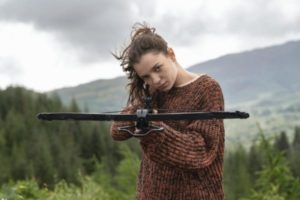
In your opinion how much truth is there in the adage that things are created in the editing room, but it in film or television?
I think there is a lot of truth in that. During the shoot you have all these elements and this army of people, which sometimes stretches into the hundreds, who are all specialists in their field, pulling together. You want to cover everything because of the huge expense involved, and you aim to get as much footage possible. In most cases you want to have as many options as possible for editing. It is however almost impossible to keep a perfect overview and control of everything when you are shooting, making film very much the art of the possible. You have all these intentions and your actor gives you all these different performance options, but on one day it was raining or the car broke down or the location you were hoping for didn’t come through. So it is a constant battle between your vision and ideas and the imperfect reality we all live in. And so in most cases, you end up with something slightly different from what was planned for. Sometimes it gives you headaches and sometimes it gives you wonderful new possibilities that you didn’t plan for.
Unless you have an unlimited budget, It is almost impossible to go out and shoot exactly what you imagined, making filmmaking a very organic thing. But that is also one of the exciting things about filmmaking and editing in particular. During editing you try to push that material as close to your subjective idea of perfection as possible. You explore all possible options and test its limits. Editing is very much where the film or show goes from an idea to something concrete and real. There is this saying that when you enter the editing room, you should leave the manuscript outside. And there is a truth to that. If you try too hard to force the footage into the mold of your script, you are going to miss some of the great new possibilities that are presented to you in the script’s meeting with the reality of shooting.
In your job how easy is it to separate yourself from the work and enjoy it as an audience member?
I have always been able to just be the audience. If I am watching something for work purposes or to learn from it, I always watch it more than once. The first watch is just pure. Exactly like any other audience would watch. I think my approach to editing is very much based on intuition, which probably helps. There is always this fear as an editor of not being able to maintain the freshness. Having watched the same scene two hundred times, how do you keep the experience fresh? How do you keep on being able to judge it properly?
To be honest, I don’t know the answer to that. But for whatever reason it has become less and less of a worry for me over the years. I think the more you work, the more in tune you get with your own emotional system, which is your most important instrument as an editor in my opinion.
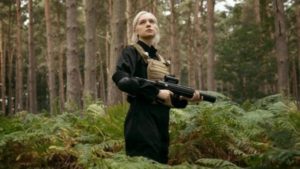
In terms of Hanna and your collaborations with Lars von Trier does an editor serve a creative vision or create a cohesive story?
As an editor, you never have a blank canvas and therefore nothing is created from scratch. That being said, I think you can reach a point where you are using the footage like paint on canvas. Lars von Trier sometimes likes to shoot these extremely long takes and just give the actors the freedom to use the space and time and themselves as they want. It sometimes becomes really chaotic, but more often than not, it adds extra dimensions or situations you could not have written or dreamed up. On Nymphomaniac we had this scene where Uma Thurman shows up with her children to confront our protagonist, the nymphomaniac, who has sort of stolen her husband. The scene was shot in these extremely long takes and the actors would just go for it in any direction they wanted. They would not be consistent from take to take to say the least. So sometimes Uma would walk into the bedroom to deliver some of her lines, while other times she would deliver the same lines in the kitchen. We ended up with a bunch of takes that were widely different in any way possible. But there was so much raw energy in the footage, Uma being one of the most brilliant actresses of her generation, obviously, and the scene was an absolute joy to cut. It was almost like cutting documentary and I think a good example of creating something original as an editor. The language of film and editing is actually very strange and no one really knows why it works or why the human brain accepts this language in the first place. To cut from a wide shot to an extreme close up of someone’s face should feel very unnatural to us, but somehow we just accept it and don’t even register it when watching a movie. Like the scene mentioned before. When you watch that scene, there are so many things that don’t actually match in a physical way. But watching it, you accept it because there is consistency on the emotional level. To me, that’s the real magic of editing.
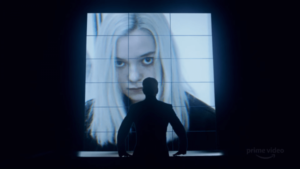
Considering your eclectic career choices what are the key considerations for you before signing onto any project?
I think increasingly the key consideration for me is the people involved. Of course, the story has to connect with me in a way, which will convince me that submerging myself in this for six months or sometimes more, will be interesting. But it always comes back to the people. Do I find them inspiring and are we speaking the same language creatively? With Hanna it had a lot to do with David Farr and Tom Coan as well as the story being based around this really strong female lead, which is something I feel we need more of.
Can you describe for me your perfect Sunday afternoon?
My perfect Sunday afternoon would be me hanging out with my kids maybe down on the beach. Then after a dip in the relatively cold European ocean, we would head back to watch a film or television show.
Thank you for taking the time to talk to Flickering Myth today and take care.
Seasons 1 and 2 of Hanna are available to stream on Amazon now.



